4
Introduction
There has been significant growth in the use of blended learning. It is clear in research findings that blended learning results in improved learning outcomes. The implementation of such blended course structures and pedagogical choices are important to these outcomes. Less research is available about the impact of implementation, but multiple models are at work. Graham, Wood field and Harrison (2013) studied institutional adoption of blended learning at institutions at various stages of blended learning adoption, including (1) awareness/exploration, (2) adoption/early implementation and (3) mature implementation/ growth. Where is your school or institution in the process of blended learning development?
This chapter begins with a look at ways institutions have restructured to include blended learning, then presents concrete instructional design examples for guidance when actually creating blended courses.
Institutions and Blended Learning
While many classroom teachers provide innovative teaching methods that can offer some form of blended learning, institutional commitment as well as an institutional review and plan can provide much-needed support and resources to ensure a comprehensive, evidence-based approach to blended learning. Graham, Wood field and Harrison (2013) provide a caution, as indicated earlier: just using the Internet or technology in some way does not mean the learning is blended. Figure 4.1 makes this idea clearer.
As indicated in previous chapters, blended learning requires the detailed combination of learning activities using in-person and online environments, each of which will include interaction, material distribution, learning facilitation, direct instruction and, if using a COL approach, constructed organisation and design throughout the course, with dedicated student participation and critical reflection.
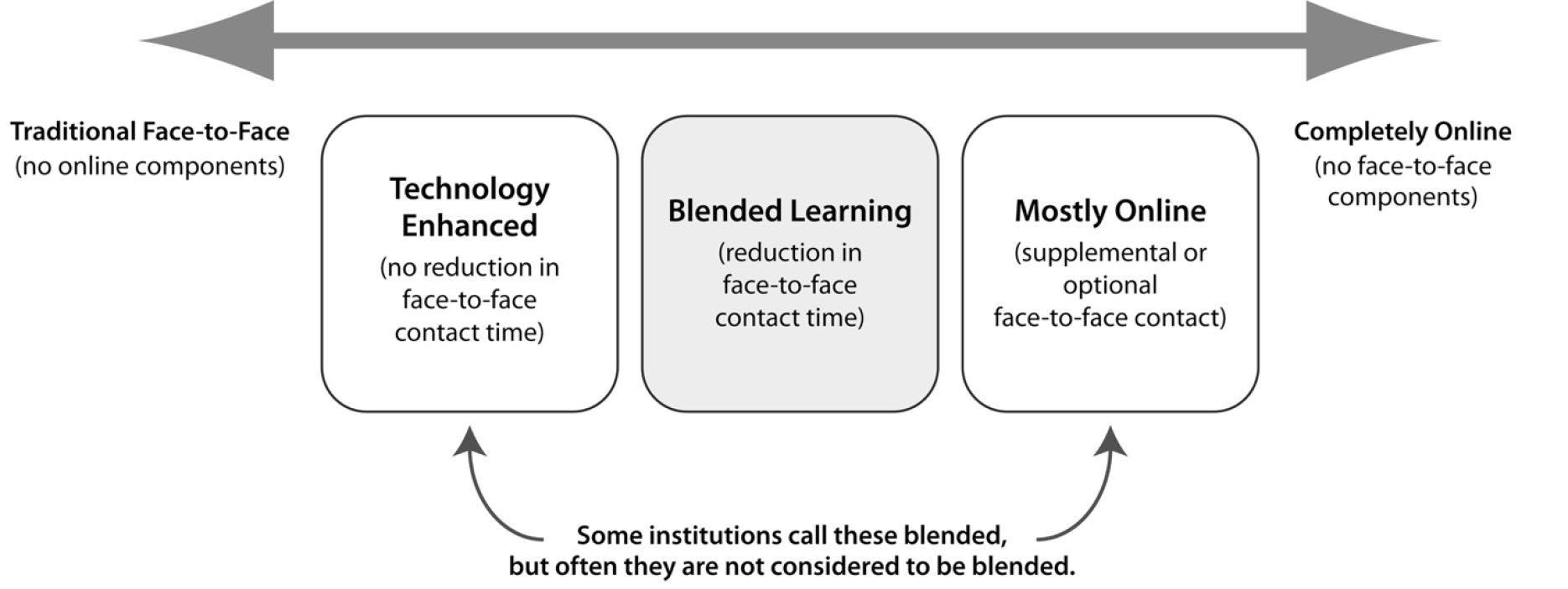
It is imprudent to try to specify how much course time should be dedicated to in-person or online interactions without considering the teaching and learning transactions, which depend on the subject, the type of materials, and the needs of the students. As the design moves from its initial conception to a later stage, the proportion may change. Some students may spend more time online in their interactions with peers, the instructor and the material, and may be less active in person. Or it may be the other way around.
This personalised, dynamic, constructed approach to blended learning has implications for the implementation of blended learning in schools and institutions. For Masoumi and Linström (2012), the integration of technology-enabled learning requires a comprehensive set of interventions to create an “e-quality infrastructure.” The infrastructure is represented in their E-quality Framework, shown in Figure 4.2.
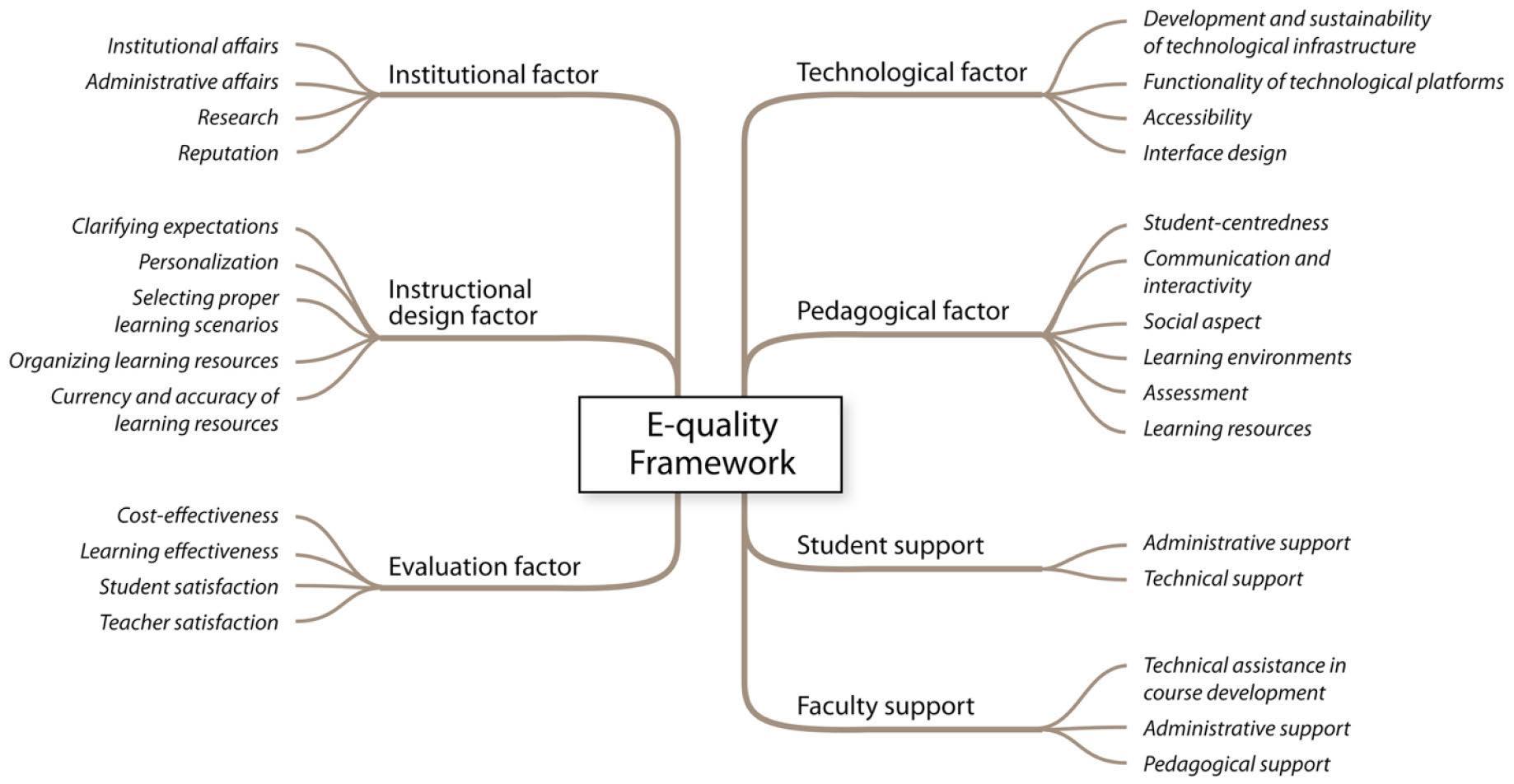
Figure 4.2. E-quality framework (adapted from Masoumi & Lindström, 2012).
Each category and subcategory listed below is outlined by Masoumi and Lindström (2012). Highlighted here are some critical pieces to consider for instructors wishing to add blended learning to their courses.
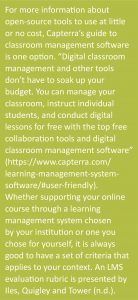
Technological factors are identified by instructors as the most relevant for blended learning,and the most challenging. You could begin by assessing your institution for available resources. Most important are sustainable and well functioning technological infrastructures,accessibility and a usable and appealing interface design. Take time to assess what is available to you in your school,school board or surrounding area.Ideally, not only will these resources be available but instructors will have technical assistance to develop courses with a range of technologies, administrative support and pedagogical support to reference a range of learning theories and instructional activities. If you are in position to request these things so as to guide your institution or board in creating the needed technology infrastructure for blended learning,make use of Masoumi and Lindström’s valuable resource to consider all necessary infrastructure resources for quality blended learning.
Instructors are often thrown into technology-enabled learning with little or no technical and professional development to assist them in adding technology to create a blended learning environment, particularly in developing countries (Stoyanov &Kirschner, 2004). If this is a do-it-yourself project, you may have to look to available resources for possible ways to use technology and engage students both in person and online.
Understand Enticers and Barriers to Blended Learning
This guidebook offers a comprehensive view of models and opportunities found in the blended learning space. Like any new way of doing things, there are both benefits and challenges to implementing innovative processes and products. We’ve referred to them as barriers and entices, language from Lewin’s Force Field Analysis for assessing any new activity (Mind Tools Videos, 2018).
Here is a start to creating your own list of the benefits and challenges of creating blending courses and programmers in your institution (Digital Chalk, 2014):
Benefits
- Opportunities for collaborative learning. Online learning spaces offer greater, more engag- ing collaboration experiences between students and instructors. These opportunities include collaborative tools such as online forum discussions, wikis, blogs, chat, etc. Through these tools, collaborative connections are available in or out of the online classroom.
- Improved accessibility. Access to classroom and online materials and communication provides convenience and learning skill development.
- Communication improvement. Teachers can reach part-time or full-time students through multiple communication channels. Learning management systems offer many communication opportunities: email, chat, news, forums, assignment spaces, etc.
- Assessment strategies. Student evaluations of both formative and summative feedback can be more detailed and frequent through online reporting structures. Self-evaluation and practice assessments can improve engagement and learning.
Challenges
- Technological requirements. Technological requirements include hardware, software and Internet access with appropriate bandwidth. These resource requirements can create systematic lack of access. Technology tools must be available, user-friendly, reliable and current for Inter- net use to support learning in a meaningful way.
- IT knowledge and skill. Termed IT literacy, preparation for use of technological tools is required. Lack of such knowledge and skill is a significant barrier to access in the first place and quality learning experiences thereafter. Access to technical support is a related and significant requirement.
- Lack of self pacing and self direction. Online learning both requires and encourages learner independence and management. For example, some research suggest that many students will watch multiple weeks’ worth of video lectures at once rather than according to course structure. Students come to online learning with varying degrees of learning competence; supporting such learning self-management should be part of all online learning experiences.
In Chapter 8, we will discuss in more detail how to evaluate your institution’s readiness for blended learning.
Peer-Review Instructional Design and Blended Course Development Plans
The peer-review process is the most respected means of testing scholarship quality. From this review comes support, intellectual development, shared resources and verified knowledge claims. Peer review, however, is rare in course design and instruction. At Athabasca University (AU), course design follows a phased creation process, which includes a principal designer as well as peer consultants, a web analyst for technology advice and a professional instructional designer. This can provide quality assurance; 97% of our students leave our programmers ranking their education experience at AU as very good. If there is no opportunity to engage a web analyst or instructional designer at your school or institution, there is usually still the opportunity to engage in peer review.
If you do research as part of your job, you can use your course design and delivery as a research project as well. Ernest Boyer (1990) has named this the “scholarship of teaching and learning.”
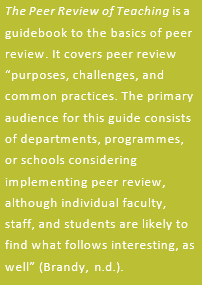
Writing Learning Objectives and Learning Outcomes
Learning objectives set benchmarks for learning activities, while learning outcomes set measurable outcomes to be realized from those objectives. The creative work of identifying both learning objectives and learning outcomes is part of any educational development exercise and falls under the label of instructional design.
How does the process of writing learning objectives and outcomes change with the move to blended learning? Instructional designs bridging both in-person and online learning must include appropriate learning activities for each, and activities that link the two environments become a new and critical area for learning objectives. For example, online learning activities will be specified where 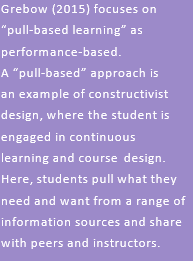 digital materials are used to add video, audio and graphics; troubleshooting or problem solving is best done in person; and collaborative activities will be specified where digital materials are used to add video, audio and graphics; troubleshooting or problem sloving is the best done in person; and collaborative activities should begin in person learning activities must reference and build upon online learning activities. For example, an in-person session can start with a review of recent online activities; conversely, adding materials or asking questions in a new online post should reference recent in-person activities These bridging activities are key to a successful blended learning course. For more on this, see Vaughan, Cleveland-Innes and Garrison (2013).
digital materials are used to add video, audio and graphics; troubleshooting or problem solving is best done in person; and collaborative activities will be specified where digital materials are used to add video, audio and graphics; troubleshooting or problem sloving is the best done in person; and collaborative activities should begin in person learning activities must reference and build upon online learning activities. For example, an in-person session can start with a review of recent online activities; conversely, adding materials or asking questions in a new online post should reference recent in-person activities These bridging activities are key to a successful blended learning course. For more on this, see Vaughan, Cleveland-Innes and Garrison (2013).
Consider How Subject Matter May Influence Blended Learning
We know that teaching, instructional design and online learning are affected by the subject matter being taught (Arbaugh, Bangert and Cleveland-Innes, 2010). Some subjects may be supported best through hands-on learning in person, such as in science labs or art rooms. That doesn’t mean it isn’t possible to simulate science labs online, or teach art through video presentation or videoconferencing with students. Choosing which learning activities to assign to online spaces and which to assign to in-person learning should be done in reference to the subject you are teaching.
Student Needs Assessment
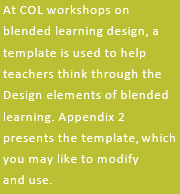
If we return for a moment to an earlier point, we are reminded that evaluating the overall readiness for a blended programe includes an assessment of the learners’ needs and preparedness for blended learning. Most learner needs assessments are generic and can be created by you in a way that determines how well learner needs align with blended learning.
Some of the areas that you can ask yourself about your learners’ needs are:
- Should I gather information about learners’ backgrounds? If so how I will use it?
- What kinds of access to technology do my students have?
- How will they use these technologies, and what is their skill level?
Specific questions about learner needs in reference to blended learning center on the need for flexibility, technical skill, technology access and learning preferences. Most learners will have the relatively simple and common skills of listening and note-taking in the classroom. Working online requires different skills, but the more convenient, media-rich online environment offers increased engagement opportunities for diverse learners. Most importantly, the online environment provides practice in becoming a virtual citizen, particularly in working and learning with diverse others in mediated communication and information-rich, web-based learning spaces.
Aligning Assessment and Learning Objectives
There is student needs assessment prior to designing a blended learning course, and then there is assessment of learning within a blended learning course. As with course design, assessment of learning has to align with the course’s learning objectives. John Biggs (2003) provides a design model for assessment that ensures consistency from learning objectives to assessment strategies, and from assessment strategies to teaching and learning activities, illustrated in Figure 4.3.
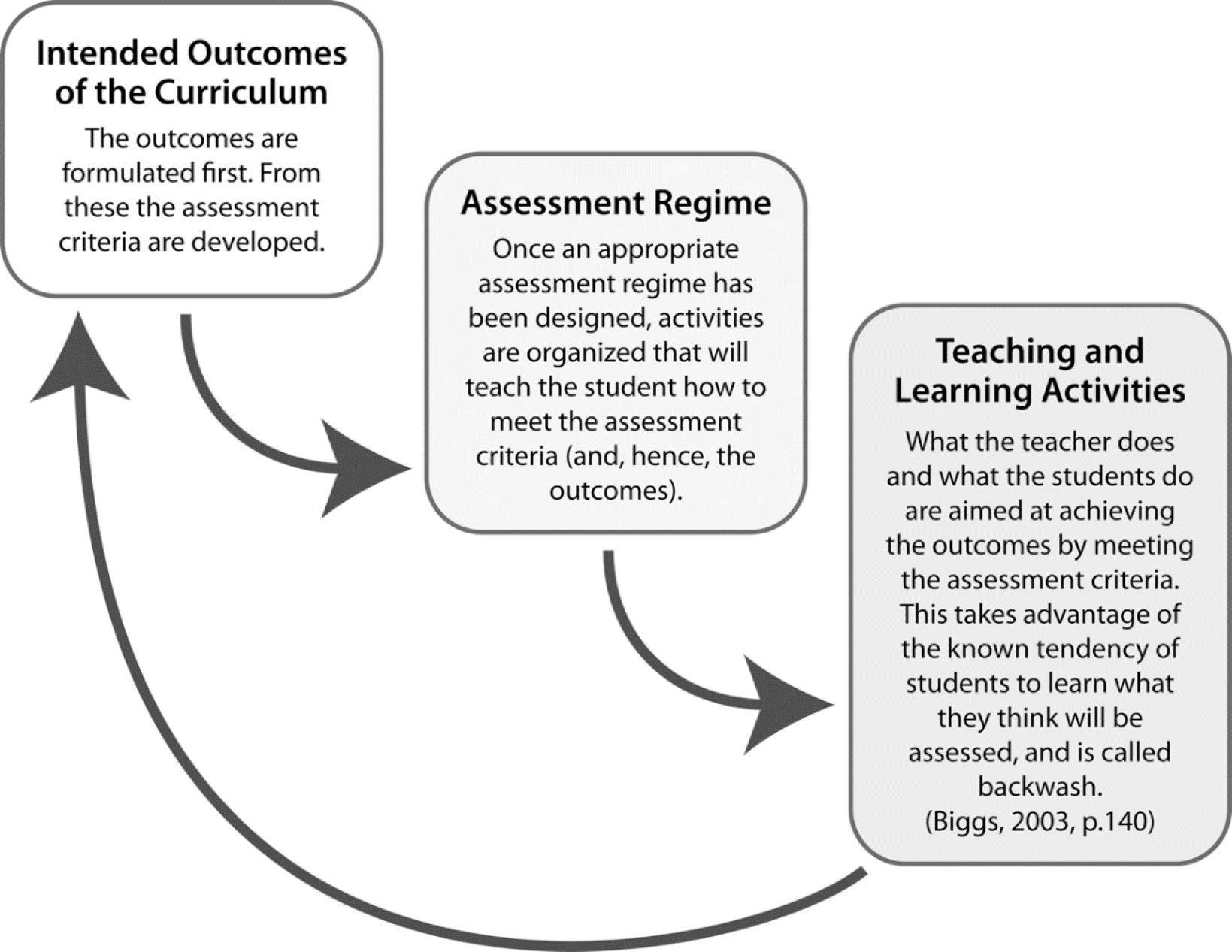
Figure 4.3. Aligning assessment with learning objectives (adapted from UCD Teaching and Learning [n.d.])
The book Teaching in Blended Learning Environments: Creating and Sustaining Communities of Inquiry (Vaughan et al, 2013) focuses on practices required of blended learning approaches and designs, including a chapter on assessment. Here, we emphasize three important points about assessment.
First, consider using both formative and summative assessment. In formative assessment, learning is reviewed and supported, but work is shaped and the learner continues to produce products that demonstrate knowledge and skill; this allows the diagnosis of any misunderstandings and provides feedback and guidance for continued progress. Summative assessment, on the other hand, is where learning is demonstrated and graded.
Second, we know from the literature on deep learning that assessment has a significant impact on outcomes. Assessing learning through activities involving application, problem solving and creativity fosters deep, meaningful learning.
Finally, graded activities that include collaboration and constructed thought, activity and products will also encourage students to engage in deep learning. Assessment activities can include group projects, peer assessments, presentations, theory and model building and structured academic debate. For more, see Chapter 5 of Vaughan, Cleveland-Innes and Garrison (2013).
CONCLUSION
In this chapter, we have considered the implementation of blended learning both within a larger institutional framework and at the level of an individual course or programmer.
While individual teachers can often create small-scale, innovative blended learning experiences within their classrooms, larger and sustainable change typically requires the commitment, support and resources of an institution. We began with an overview of Masoumi and Lindström’s E-quality Framework, which maps out the key factors — from institutional to pedagogical to evaluation — that should be considered when assessing your institution’s readiness for technology-enhanced or blended learning, as well as the resources that are available or required. We also re-emphasized an important point in planning any blended learning programme: the balance between online and in-person learning is dependent on your individual educational goals and situation; trying to specify a precise mix in advance is usually counterproductive.
We then considered some of the entices and barriers, or pros and cons, of implementing blended learning at an institutional level. While the barriers may create some resistance to adopting new blended programmes, they are also useful for indicating the range of supports necessary for successful implementation, including technological support and learner support. Establishing a peer-reviewed instructional design process can be an effective way to ensure high-quality learning materials and activities.
We then turned to key instructional design principles for implementing blended learning programms or courses; the writing of learning objectives and learning outcomes was seen as central to this process. In blended learning, objectives and activities must be specified for each mode — online and in-person — but also for bridging the two, with activities beginning online and then continuing in person or vice versa. This bridging or referencing between online and in-person activities is critical; the two forms of learning should not seem isolated from each other. We also emphasized how the subject matter may influence the mix of your blended course or programme, as well as the importance of a thorough student needs assessment. A final consideration in implementing a blended course or programme is the alignment between the learning objectives and assessment activities, including both formative and summative assessment and assessments that encourage deep learning.
This chapter has provided a broad sketch of the most significant factors to consider when implementing blended learning. The remaining chapters will explore these factors in more detail, including the range of available technologies, and activities you may want to incorporate in your own blended learning programme.
REFLECTION QUESTIONS
- When you consider your institution and blended learning activities, are you able to identify enticers for and barriers to blended learning?
- How will you use learning objectives and learning outcomes when designing blended learning?
- What learning assessment strategies do you currently use, and how will they change when you create a blended learning environment?

